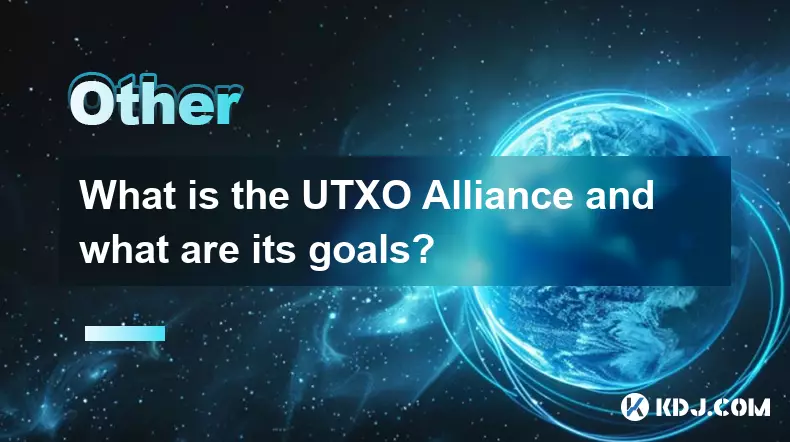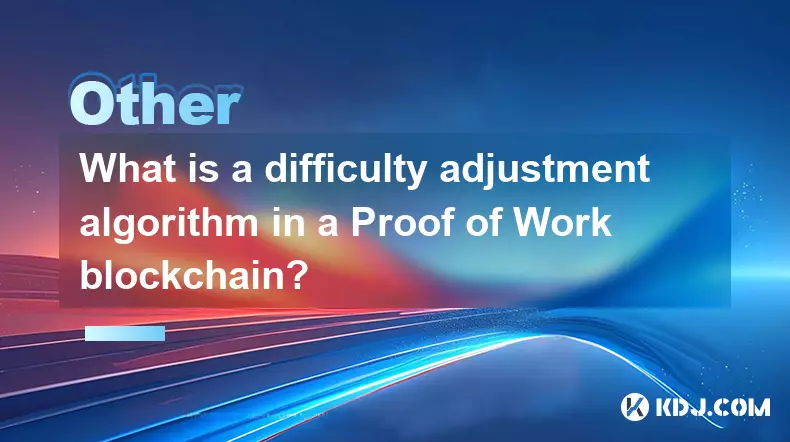-
 bitcoin
bitcoin $101752.865364 USD
-1.09% -
 ethereum
ethereum $3382.985899 USD
-1.38% -
 tether
tether $0.999658 USD
0.04% -
 xrp
xrp $2.272505 USD
-1.51% -
 bnb
bnb $989.089004 USD
0.14% -
 solana
solana $156.962612 USD
-3.08% -
 usd-coin
usd-coin $0.999776 USD
0.01% -
 tron
tron $0.290786 USD
-0.69% -
 dogecoin
dogecoin $0.174594 USD
-2.86% -
 cardano
cardano $0.560085 USD
-3.55% -
 hyperliquid
hyperliquid $40.023704 USD
-5.75% -
 chainlink
chainlink $15.324649 USD
-2.78% -
 bitcoin-cash
bitcoin-cash $493.576540 USD
-3.52% -
 zcash
zcash $571.320038 USD
-12.05% -
 stellar
stellar $0.280066 USD
-4.26%
What is a data availability layer and how does it help rollups become more secure and cheaper?
A data availability layer ensures rollups publish transaction data securely, enabling verification, reducing costs, and enhancing scalability without sacrificing decentralization.
Nov 08, 2025 at 08:39 pm

What Is a Data Availability Layer?
1. A data availability layer is a foundational component in blockchain infrastructure designed to ensure that transaction data posted by rollups is publicly accessible and verifiable. Unlike traditional blockchains where execution, consensus, and data storage happen on-chain, modular blockchains separate these functions. The data availability layer specifically handles the storage and verification of transaction data without processing or executing transactions.
2. Rollups, such as optimistic and zk-rollups, execute transactions off-chain and then post compressed transaction data back to the base layer, typically Ethereum. However, for security, it's essential that this data remains available so any node can re-execute transactions if needed. Without guaranteed data availability, malicious actors could hide transaction details and compromise the integrity of the system.
3. Data availability layers use techniques like data erasure coding and fraud proofs to allow light clients or validators to verify that all data has been published without downloading the entire dataset. This ensures decentralization and scalability while preserving trust-minimized access to information.
4. Examples include Ethereum’s current reliance on its own L1 for data posting, Celestia’s dedicated data availability network using Tendermint and erasure coding, and projects like Polygon Avail and Near DA. These systems are optimized to handle high throughput of data with minimal overhead.
How Does It Enhance Rollup Security?
1. Ensuring full transparency of transaction batches is critical for rollup security. If a sequencer posts state roots but hides the underlying transaction data, users cannot challenge invalid state transitions. A robust data availability layer prevents this by making data publication a prerequisite for finality.
2. In optimistic rollups, challengers must have access to transaction data to detect and dispute fraudulent claims during the challenge period. Without a reliable data availability solution, attackers could submit invalid blocks and prevent honest nodes from generating fraud proofs, undermining the entire security model.
3. Even in zk-rollups, although validity proofs guarantee correctness, data availability remains necessary. If the input data behind a proof is withheld, users cannot reconstruct account states or verify balances independently, leading to centralization risks and potential censorship.
4. By decoupling data availability from execution, networks reduce trust assumptions. Users no longer need to rely on centralized operators or sequencers to behave honestly. Instead, cryptographic and economic mechanisms enforce openness through distributed data publishing.
Why Does It Reduce Costs for Rollups?
1. Transaction fees on rollups are heavily influenced by how much they pay to publish data on the base layer. On Ethereum, calldata costs scale linearly with data size. By leveraging a specialized data availability layer, rollups can post data more efficiently using methods like blob-carrying transactions or erasure-coded shares.
2. Dedicated data availability solutions often offer significantly lower costs per byte compared to general-purpose blockchains. For example, EIP-4844 introduced proto-danksharding to Ethereum, enabling cheaper data blobs that cut rollup fees by up to 90% in some cases.
3. Modular architectures allow rollups to choose cost-effective data markets. Instead of being locked into one expensive chain, they can opt for external layers like Celestia or Avail, which are built for high-throughput, low-cost data settlement.
4. Efficient encoding and sampling techniques mean that even lightweight devices can participate in data availability checks. This broadens validator participation, increases competition, and drives down service prices over time.
Frequently Asked Questions
What happens if data is not available in a rollup system?
If transaction data is not available, users lose the ability to verify the correctness of the state. In optimistic rollups, this prevents fraud proofs from being generated, allowing invalid blocks to be finalized. In zk-rollups, while proofs are valid, users cannot audit inputs or reconstruct balances, creating opacity and centralization risk.
How do data availability proofs work?
Data availability proofs rely on erasure coding, where original data is expanded into redundant fragments. Light clients randomly sample portions of the encoded data. If enough samples are available, they can statistically confirm full data publication without downloading everything. Missing pieces indicate withholding, triggering alerts or penalties.
Can a data availability layer support multiple rollups simultaneously?
Yes, most modern data availability layers are designed to serve multiple rollups. They act as shared settlement layers for data, enabling interoperability and reducing duplication. Each rollup submits its batch in a segregated namespace, ensuring isolation while benefiting from pooled security and lower costs.
Disclaimer:info@kdj.com
The information provided is not trading advice. kdj.com does not assume any responsibility for any investments made based on the information provided in this article. Cryptocurrencies are highly volatile and it is highly recommended that you invest with caution after thorough research!
If you believe that the content used on this website infringes your copyright, please contact us immediately (info@kdj.com) and we will delete it promptly.
- Ripple (XRP) in 2026: Hold or Fold? A Look at XRP's Future and Emerging DeFi Alternatives
- 2025-11-08 18:35:01
- Zcash ZEC Coin Price Explosion: From Privacy Niche to Center Stage
- 2025-11-08 18:55:01
- Berachain Price Prediction: Navigating the Honeycomb Hype in Crypto
- 2025-11-08 18:55:01
- Arthur Hayes, Gold, and Bitcoin: A Modern Monetary Trinity?
- 2025-11-08 19:15:01
- Shiba Inu's Next Move: Navigating a Shifting Market
- 2025-11-08 19:20:01
- Pakistan's Crypto Crossroads: Balancing Opportunity with Asset-Backed Realities
- 2025-11-08 19:20:01
Related knowledge

What are intents in crypto and how do they change user interaction?
Nov 09,2025 at 09:00am
Understanding the Role of Decentralized Exchanges in Modern Crypto Trading1. Decentralized exchanges, commonly known as DEXs, have reshaped how trader...

What is a cryptographic nonce and how is it used to prevent replay attacks?
Nov 08,2025 at 05:00pm
Understanding Cryptographic Nonces in Blockchain Systems1. A cryptographic nonce is a number used only once within a specific cryptographic communicat...

What are the trade-offs between liveness and safety in a consensus protocol?
Nov 09,2025 at 12:20pm
Understanding the Role of Liquidity Pools in Decentralized Finance1. Liquidity pools are foundational components within decentralized exchanges (DEXs)...

What is a call data in an Ethereum transaction and how is it used?
Nov 09,2025 at 01:59am
Understanding Call Data in Ethereum Transactions1. Call data refers to the information sent along with a transaction on the Ethereum network that spec...

What is the UTXO Alliance and what are its goals?
Nov 09,2025 at 01:39pm
Understanding the UTXO Alliance1. The UTXO Alliance is a collaborative initiative formed by prominent blockchain projects and developers who support t...

What is a difficulty adjustment algorithm in a Proof of Work blockchain?
Nov 09,2025 at 08:20am
Understanding the Role of Difficulty Adjustment in Proof of Work1. A difficulty adjustment algorithm is a core mechanism in Proof of Work (PoW) blockc...

What are intents in crypto and how do they change user interaction?
Nov 09,2025 at 09:00am
Understanding the Role of Decentralized Exchanges in Modern Crypto Trading1. Decentralized exchanges, commonly known as DEXs, have reshaped how trader...

What is a cryptographic nonce and how is it used to prevent replay attacks?
Nov 08,2025 at 05:00pm
Understanding Cryptographic Nonces in Blockchain Systems1. A cryptographic nonce is a number used only once within a specific cryptographic communicat...

What are the trade-offs between liveness and safety in a consensus protocol?
Nov 09,2025 at 12:20pm
Understanding the Role of Liquidity Pools in Decentralized Finance1. Liquidity pools are foundational components within decentralized exchanges (DEXs)...

What is a call data in an Ethereum transaction and how is it used?
Nov 09,2025 at 01:59am
Understanding Call Data in Ethereum Transactions1. Call data refers to the information sent along with a transaction on the Ethereum network that spec...

What is the UTXO Alliance and what are its goals?
Nov 09,2025 at 01:39pm
Understanding the UTXO Alliance1. The UTXO Alliance is a collaborative initiative formed by prominent blockchain projects and developers who support t...

What is a difficulty adjustment algorithm in a Proof of Work blockchain?
Nov 09,2025 at 08:20am
Understanding the Role of Difficulty Adjustment in Proof of Work1. A difficulty adjustment algorithm is a core mechanism in Proof of Work (PoW) blockc...
See all articles





















![The Graph Price Prediction [GRT Crypto Price News Today] The Graph Price Prediction [GRT Crypto Price News Today]](/uploads/2025/11/07/cryptocurrencies-news/videos/690d4df44fe69_image_500_375.webp)



















































